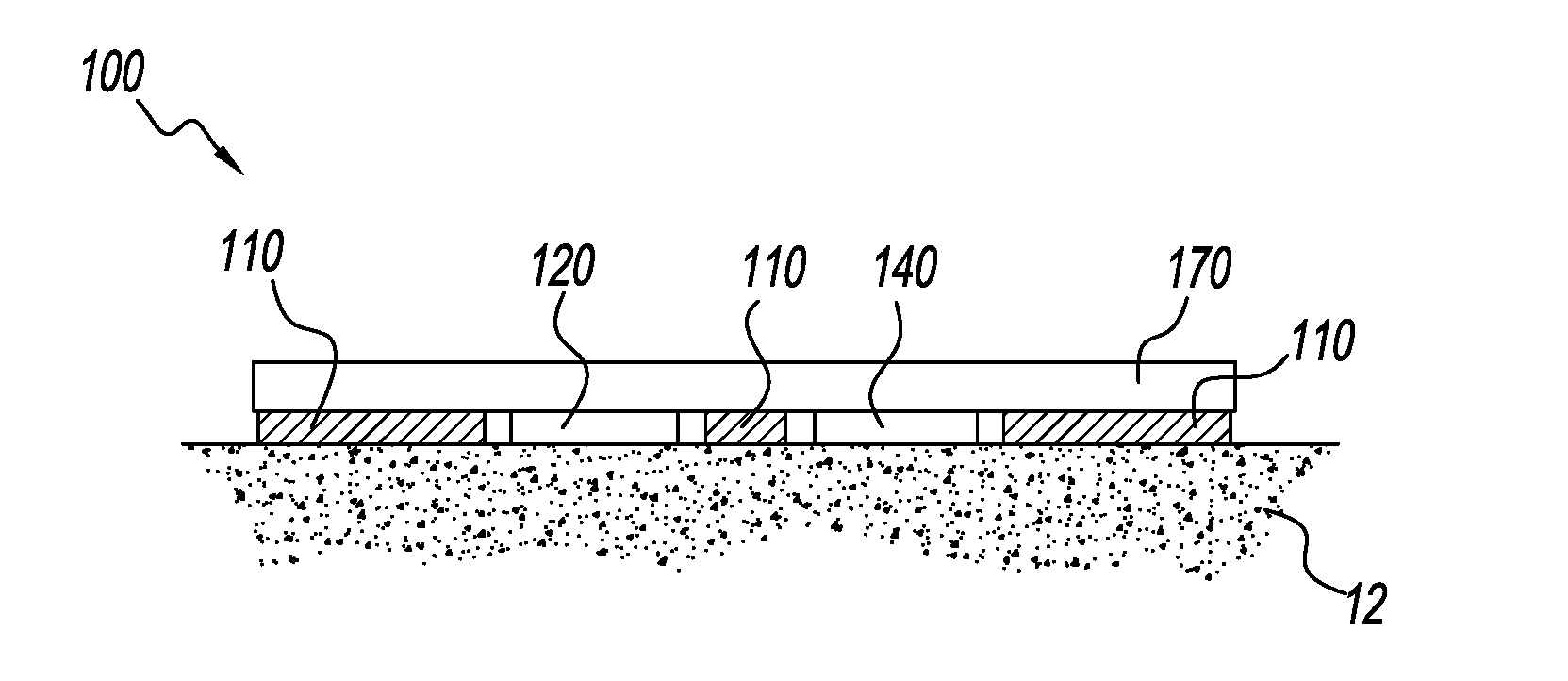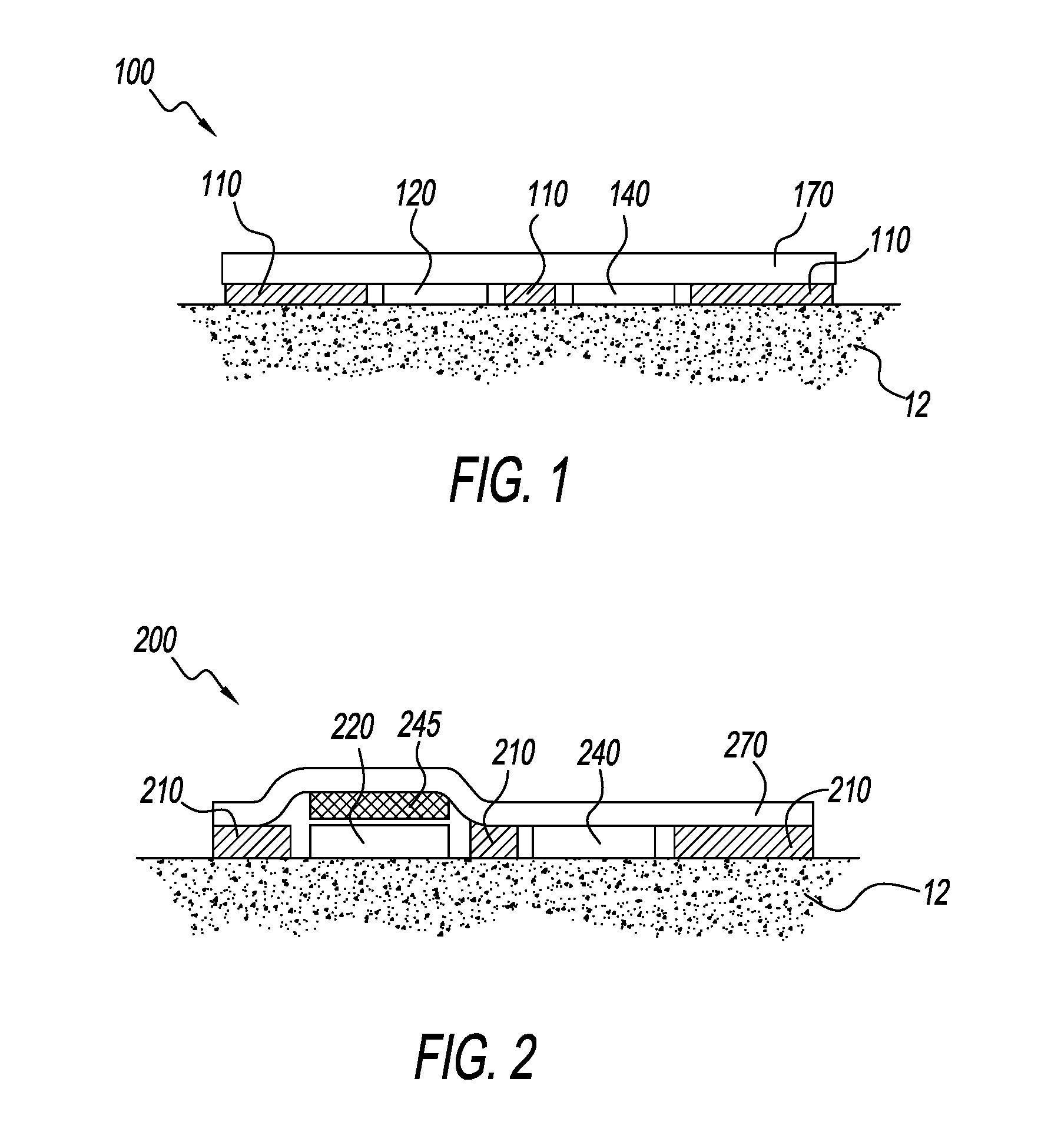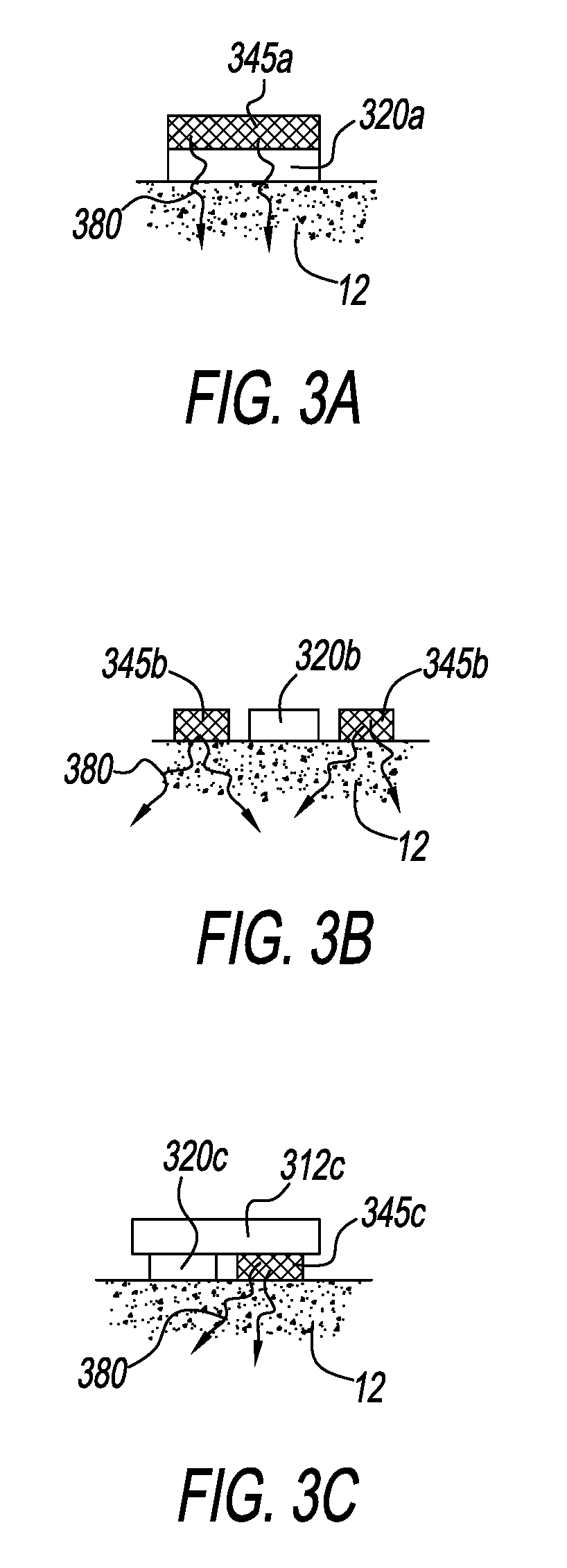Smart sweat stimulation and sensing devices
a sensing device and sweat stimulation technology, applied in the field of smart sweat stimulation and sensing devices, can solve the problems of sweat sensing not fully achieving its biosensing potential, sweat sensing has yet to realize its full biosensing potential, and reduce the perceived capability and opportunity space for sweat sensing, so as to improve the dependability and predictability of sweat sampling rate, the effect of minimizing skin irritation
- Summary
- Abstract
- Description
- Claims
- Application Information
AI Technical Summary
Benefits of technology
Problems solved by technology
Method used
Image
Examples
example 1
[0042]An individual wears a sweat sensing device similar to that depicted in FIG. 1 to measure their sweat cortisol level on a once-daily basis. The device is configured to allow multiple sampling events to occur naturally during the day, if available, but must conduct at least one chronologically assured sweat sample each day. The device is further configured with skin impedance electrodes and sweat chloride ionophore sensors to determine if a sampling event occurs. If the individual goes through the majority of the day and the device determines by a means like skin impedance, GSR, or sweat chloride concentration, that no chronologically assured sampling event has occurred, the device activates the sweat stimulating component to ensure the required one sampling event occurs.
example 2
[0043]A particular sweat sensor application requires four sweat sampling events per day, at an interval of at least two hours between sampling events. Using continual thermal stimulation to support the application would be ineffective, either because the body may adapt to the thermal stimulation by reducing the sweat response, because continuous thermal stimulation would cause excessive skin irritation, or because such stimulation would be an excessive drain on electronic power or onboard stimulant resources. The sweat sensing device could determine the sweat onset temperature directly by skin impedance, or indirectly by room temperature, heart rate, or other means. Alternately, the device may infer through the individual's behavior that they will soon reach sweat onset, for instance, because the individual is taking a walk. The device also measures when the skin under the device is adequately close to sweat onset via skin temperature, GSR, skin impedance, or other means. Once the s...
example 3
[0044]An individual wearing a sweat sensing device has not yet provided adequate sweat sampling events to enable a particular application. The device communicates to a smart phone, which in turn alerts the user to do something to increase proximity to sweat onset, or alternatively, the device may initiate thermal or chemical sweat stimulation, so that a sweat sampling event can occur. Both inducing sweat directly and improving proximity to sweat onset temperature are distinct embodiments of the disclosed invention. The individual responds to the alert by taking a brisk walk, turning up the room temperature, putting on a sweater, drinking a cup of tea, or other means, to cause a sampling event to occur, or to cause a sweat sampling event to occur by acting in combination with other sweat stimulation techniques. The individual may also orally ingest a chemical sweat stimulant, or other drugs, e.g., pilocarpine, or cevimeline. This embodiment generally describes a sweat sensing device ...
PUM
 Login to View More
Login to View More Abstract
Description
Claims
Application Information
 Login to View More
Login to View More - R&D
- Intellectual Property
- Life Sciences
- Materials
- Tech Scout
- Unparalleled Data Quality
- Higher Quality Content
- 60% Fewer Hallucinations
Browse by: Latest US Patents, China's latest patents, Technical Efficacy Thesaurus, Application Domain, Technology Topic, Popular Technical Reports.
© 2025 PatSnap. All rights reserved.Legal|Privacy policy|Modern Slavery Act Transparency Statement|Sitemap|About US| Contact US: help@patsnap.com



